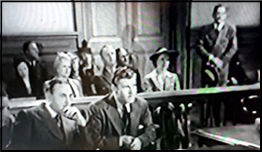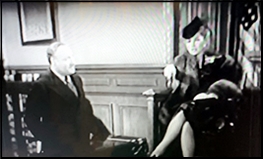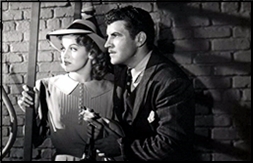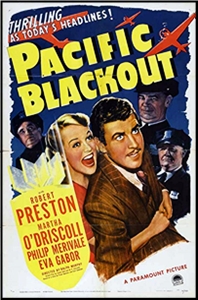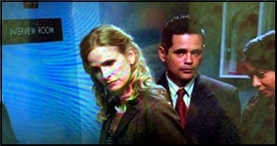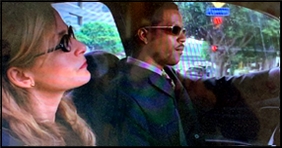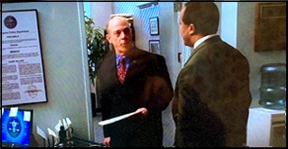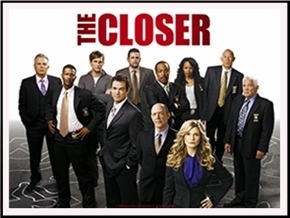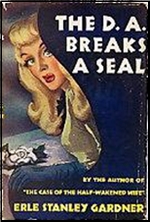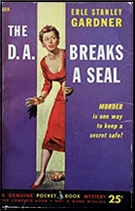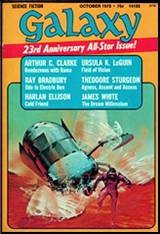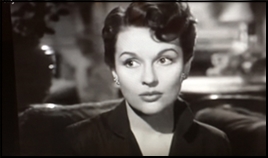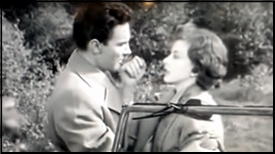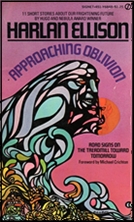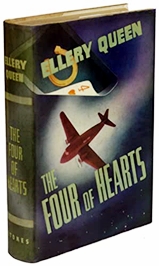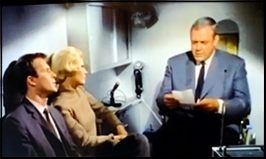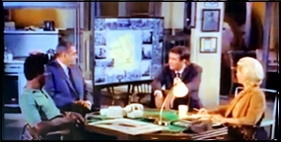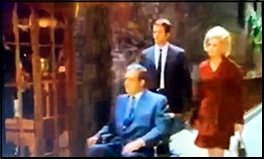FIRST YOU READ, THEN YOU WRITE
by Francis M. Nevins
What I’m about to describe sounds like a coincidence worthy of Harry Stephen Keeler, but it really happened. During the year 1928 two young men of New York, working in the advertising and publicity fields, spent most of their evenings, weekends and vacation time collaborating on a detective novel for submission to a writing contest with a $7,500 prize.
Their names were Frederic Dannay and Manfred B. Lee, and the byline they used for their novel was Ellery Queen. They won the contest (only to lose it again, but that’s another story) and eventually became world-famous under that byline.
Many of their subsequent novels and stories centered around a cryptic message left by the murder victim.
Now comes the hard-to-believe part. During that same year 1928 a book was published which consisted of three long stories plus a framing story. The first of the long stories, “The Giant Moth,†was also about two young men in the advertising business who had written a detective novel for a prize competition.
On the eve of the announcement of the winner, one of the two—a fellow named Wilk Casperson who’s desperate to win and use his share of the money to set up housekeeping with the daughter of a wealthy stockbroker—goes to a masquerade ball at the mansion of his girlfriend’s father dressed as, you guessed it, a giant moth, and quickly becomes involved in a murder whose victim apparently left behind him, you guessed it again, a dying message.
Who wrote this story? The King of Koinkydink. The nuttiest filbert of them all. In his middle twenties, after a few years of turning out fairly ordinary short stories, usually with O. Henry twist endings, Harry Stephen Keeler (1890-1967) became more ambitious and, beginning in 1914, concentrated on much longer tales. Usually works of such length are called short novels, novelettes, novelets or novellas. Harry liked to call them novellos, probably with the accent on the first syllable.
“The Giant Moth†first appeared in Top-Notch, 1 June 1918, at about 35,000 words. Ten years later and at least 20,000 words longer, it became the tale of the first prisoner in Keeler’s SING SING NIGHTS (Dutton, 1928).
Fast forward almost a century and it still stands up as a beautiful example of the kind of plot only Keeler could devise. With two characters dressed as moths attending the same masquerade ball at different times, two supplies of disappearing ink, a Chinese gangster who like-a to speak-a in de Italian dialecto, a missing diamond necklace, a murdered lepidopterist, an enigmatic Japanese servant, and a secret map giving away the defenses of the Panama Canal, the story has enough wackadoodle elements for three times its length, but let’s focus on the dying message.
Paralyzed from the waist down after being shot in the back, and with no pen or pencil within reach, the mothologist in his last moments apparently made use of what he did have available—some strips of tissue paper and rubber type used to make out classification cards for his specimens—to leave the following message:
FIND
USHI
HE
KNOWS
Ushi is the name of the moth maven’s servant, who has vanished. No reader in a million years could figure out the real meaning of that message and no writer other than Keeler could have dreamed up the gimmick. Whether Fred Dannay or Manny Lee ever heard of the tale remains unknown.
***
The Ellery Queen novels and stories proved to be so popular in the 1930s that at the end of the decade a network radio series about the character was launched, with Hugh Marlowe (1911-1982) as EQ. The prime mover behind the series was George Zachary (1911-1964), who served as producer and director from its debut on CBS as an hour-long program (18 June 1939) till its departure in 30-minute form on 22 September 1940.
In January 1942, a month after Pearl Harbor, the series returned on the NBC Red Network, with Carleton Young (1907-1971) as Ellery. Zachary continued as producer but was replaced in his other capacity by two men from the Ruthrauff & Ryan advertising agency’s stable of directors working in alternation, Bruce Kamman and the man we are to follow.
Knowles Entrikin (1880-1956) is almost completely forgotten today, but in his time he was fairly well-known on the stage as a producer, playwright and director before he entered radio. Perhaps his main claim to fame in that medium was that in 1934, as director of the CBS educational series American School of the Air (1930-48), he hired a brash 19-year-old named Orson Welles for his first audio acting job.
I know of only one reference to Entrikin’s work on the EQ series, an unpublished letter of 22 November 1942 from Manny to Fred, discussing the program’s most recent episode (“The Bald-Headed Ghost,†19/21 November):
To me it was a shocking job of production. It sounded so bad that for a time I was almost inclined to the naturally impossible theory that Entrikin had done it that way….[I]t all made me sick, and apprehensive…. How he messed up that scene in the wife’s bedroom!….We can give them the best scripts in radio but if they crap all over them, as they did on this one, who’ll know it?
I take it that the last words mean: Who will know you and I aren’t to blame?
Entrikin seems to have remained with the EQ series from its return to the air in January 1942 until fourteen months later when Ruthrauff & Ryan assigned him to a project on the West Coast. He’s included here because, like Harry Stephen Keeler, he brushed against Fred Dannay and Manny Lee.
***
Finally we come to another man, infinitely better known than Entrikin, who was thought to have brushed against Fred and Manny but actually didn’t. I refer to none other than John Wayne. During the WWII years the Queen radio series featured Hollywood personalities and some unknowns, many of them in the military, as guest armchair detectives.
My book THE SOUND OF DETECTION: ELLERY QUEEN’S ADVENTURES IN RADIO (2002) included an episode-by-episode list of those guests, based on research in old studio files by Martin Grams, Jr. Much of what Marty found in those files consisted only of guests’ first initials and last names. For “The Fire Bug†(22/24 July 1943) and “The Fallen Gladiator†(16/18 September 1943) one of those guests was a certain J. Wayne.
Knowing that the Duke didn’t serve in the war, both Marty and I—and before us John Dunning in the entry on the Queen series in ON THE AIR: THE ENCYCLOPEDIA OF OLD TIME RADIO (Oxford University Press, 1998)— assumed that this was he. Later research revealed that “J.†was an ordinary Joe by the name of Jerry Wayne.
All things considered, I still think the mistake we made was reasonable. But I do wonder how many readers of THE SOUND OF DETECTION racked their brains trying to imagine the Duke playing supersleuth. If any of them happen to read this column, my deepest apologies.
